Seemingly out of the blue, artificial intelligence is everywhere. From next-level chatbot search engines, to hilarious AI-generated pizza commercials, to super-trippy visual art, our society is just starting to dip our toes into the deep waters of this new technology. As with any new technology, some level of skepticism, or even fear, makes sense, and there have already been countless think pieces published on how AI will affect the world.
The Dish Works approach to change and evolution in the content creation industry has always been to lead with curiosity and open-mindedness. Instead of being threatened by new tech, we look at these advances as potential tools to help us make even more compelling, beautiful work, and to help us maximize efficiency to benefit our clients.
As we noted in a previous blog post about using AI for culinary content creation, some Dish Works team members have formed an AI committee which meets every two weeks to share learning experiences, tips, questions and other feedback from our various experiences using this emerging technology.
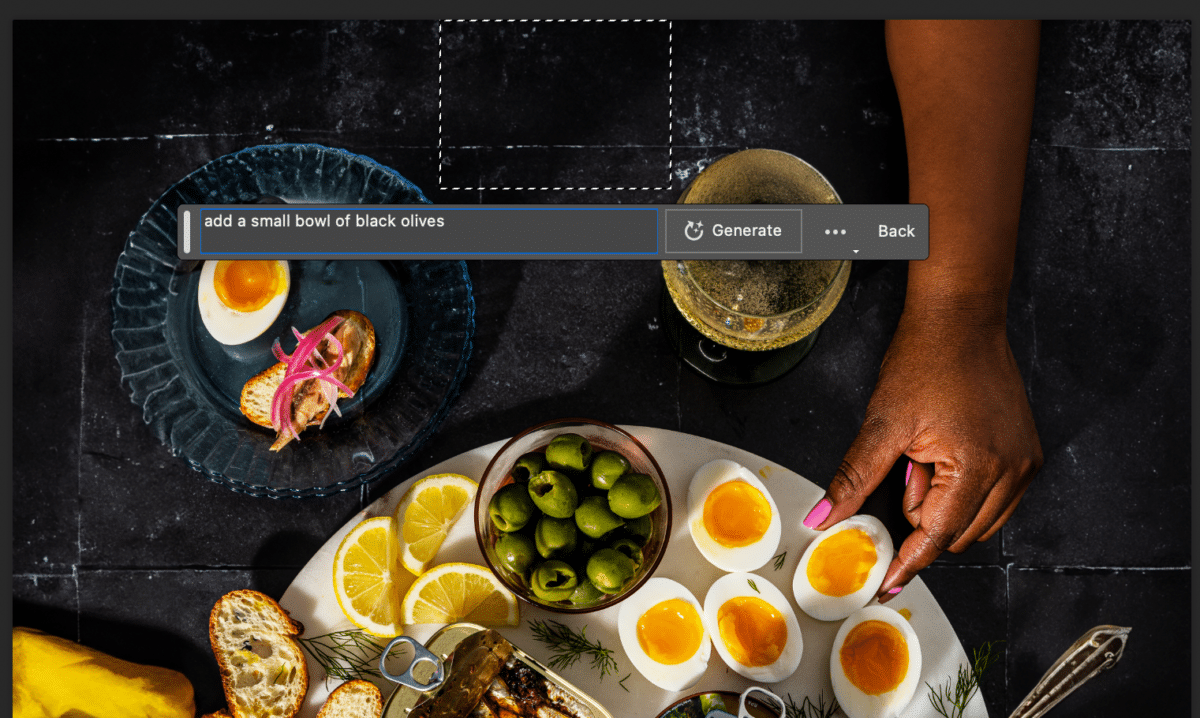
Our post-production team, who usually takes an extra-active interest in advancements in gear and tech, has been doing a ton of research into how AI is being used in their sector, and how our team can leverage it, as well.
One of the primary uses they’ve identified for working with AI is with image generation to create background for client work. In some specific cases, it seems like using this tech may save a lot of time (and money), if a realistic image can be generated, versus setting up an entire shoot. For instance, if a client wanted their product shot with an amusement park in the background, it’s possible that an AI-generated image, with the product expertly superimposed on top, could work almost like a green screen, eliminating the need to go on-site or to create a whole elaborate set.
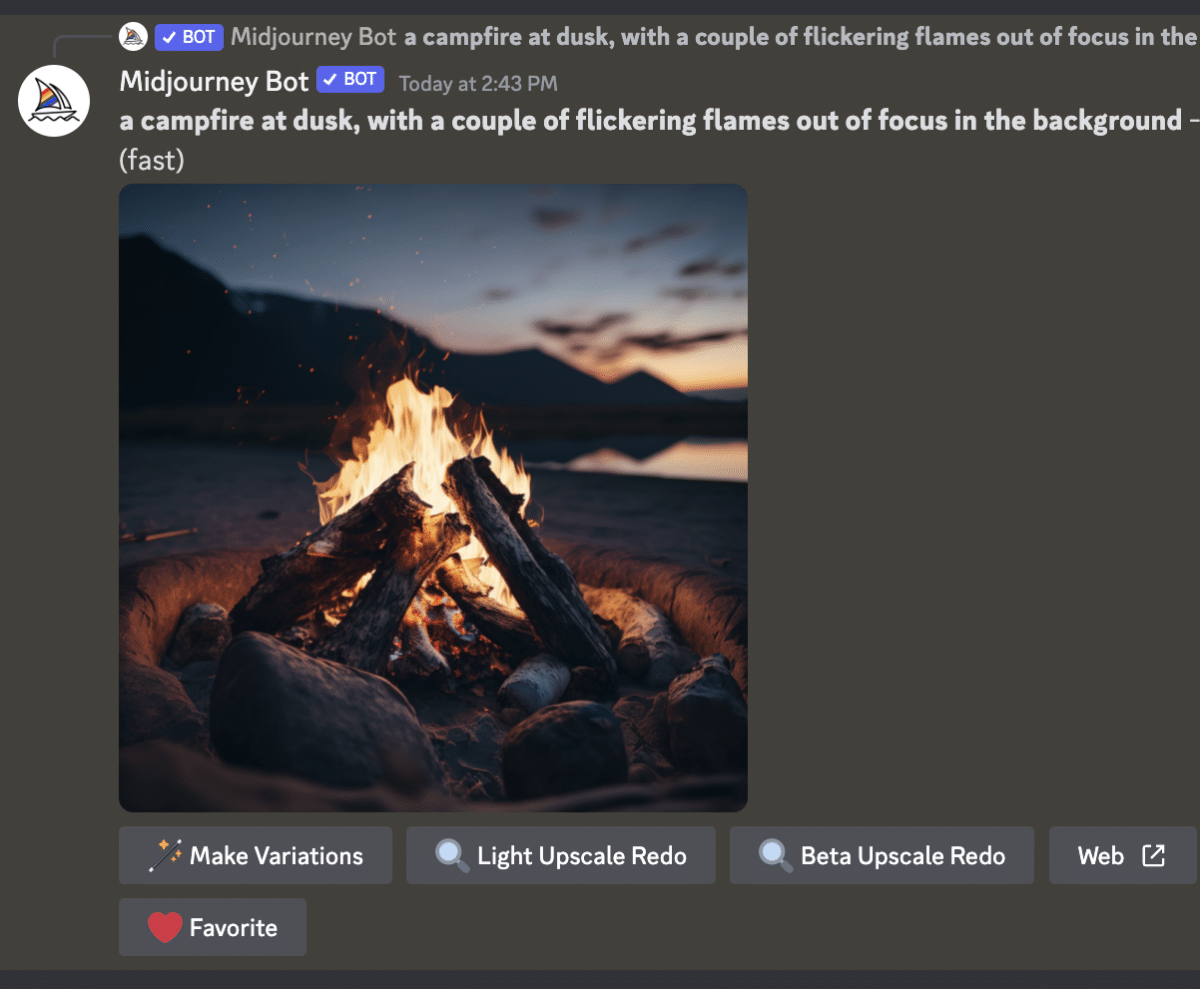
However, from their initial forays in using AI for post-production tasks, the post-production team has observed that AI tools aren’t powerful enough yet to reliably produce consistently high-quality images. This is especially true with giving the image generator instructions around specific angles, times of day or other unique prompts. Trying to edit the images that the AI generator spits out can be tricky, and superimposing a hand or a product doesn’t always look great.
Or, sometimes, if you enter a prompt and get decent results, but then you try to give additional instructions, the generator yields totally different results. Or, sometimes if you put in the same exact prompt, you get brand-new results.
The folks on this team have also noticed that, from a photo/video standpoint, a lot of what people are trying to accomplish with AI is just a streamlined version of products that already exist. For instance, clipping and masking tools exist for professionals in different software, like Adobe Photoshop, but AI interfaces sometimes help make those processes more seamless.
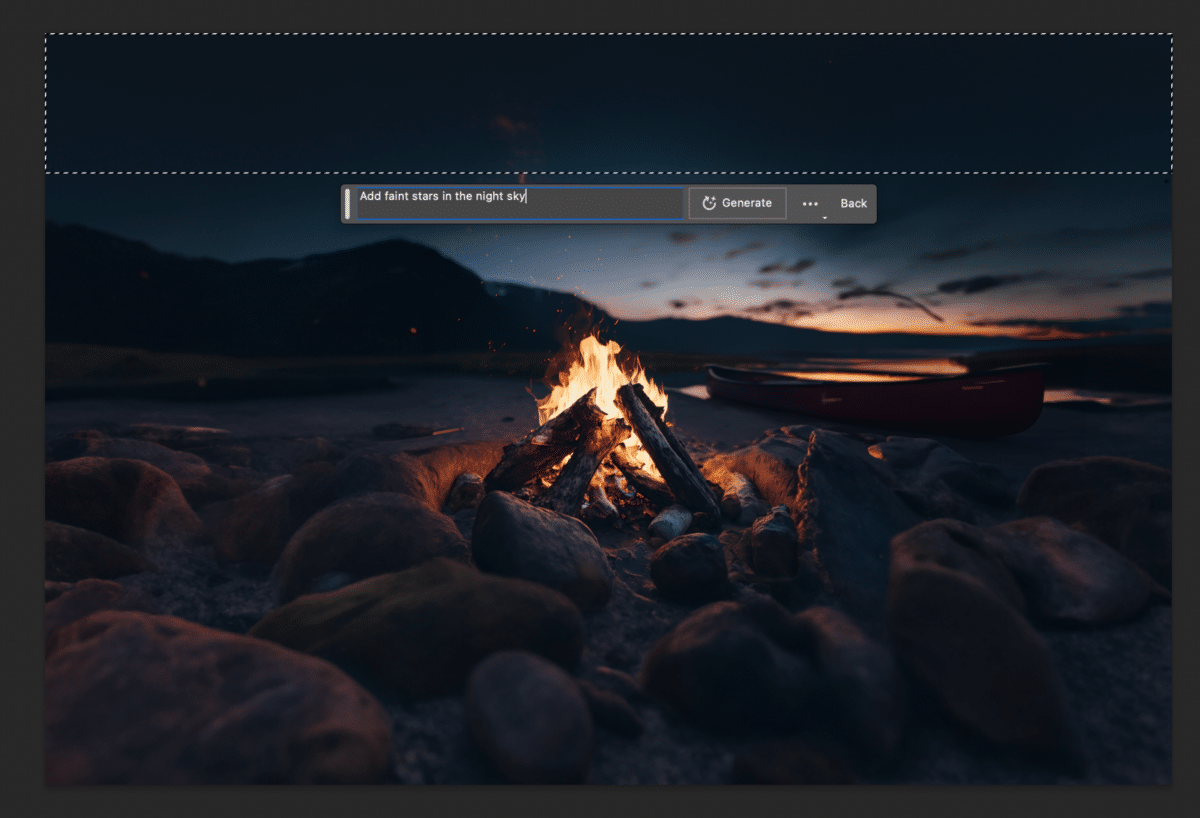
One of these expanded-tools the Dish Works post-production team has also been experimenting with is the Photoshop Generative Fill tool (still currently in beta). Adobe’s Firefly AI tech can extend the frame of an image, and add and remove content from images.
This could be a powerful tool for culinary content creation. If we shot a tablescape scene for a client, and they wanted to extend the edge of the frame, or add items to the shot, we could theoretically do that in a highly realistic manner without needing to re-shoot the image. Here’s what that might look like:
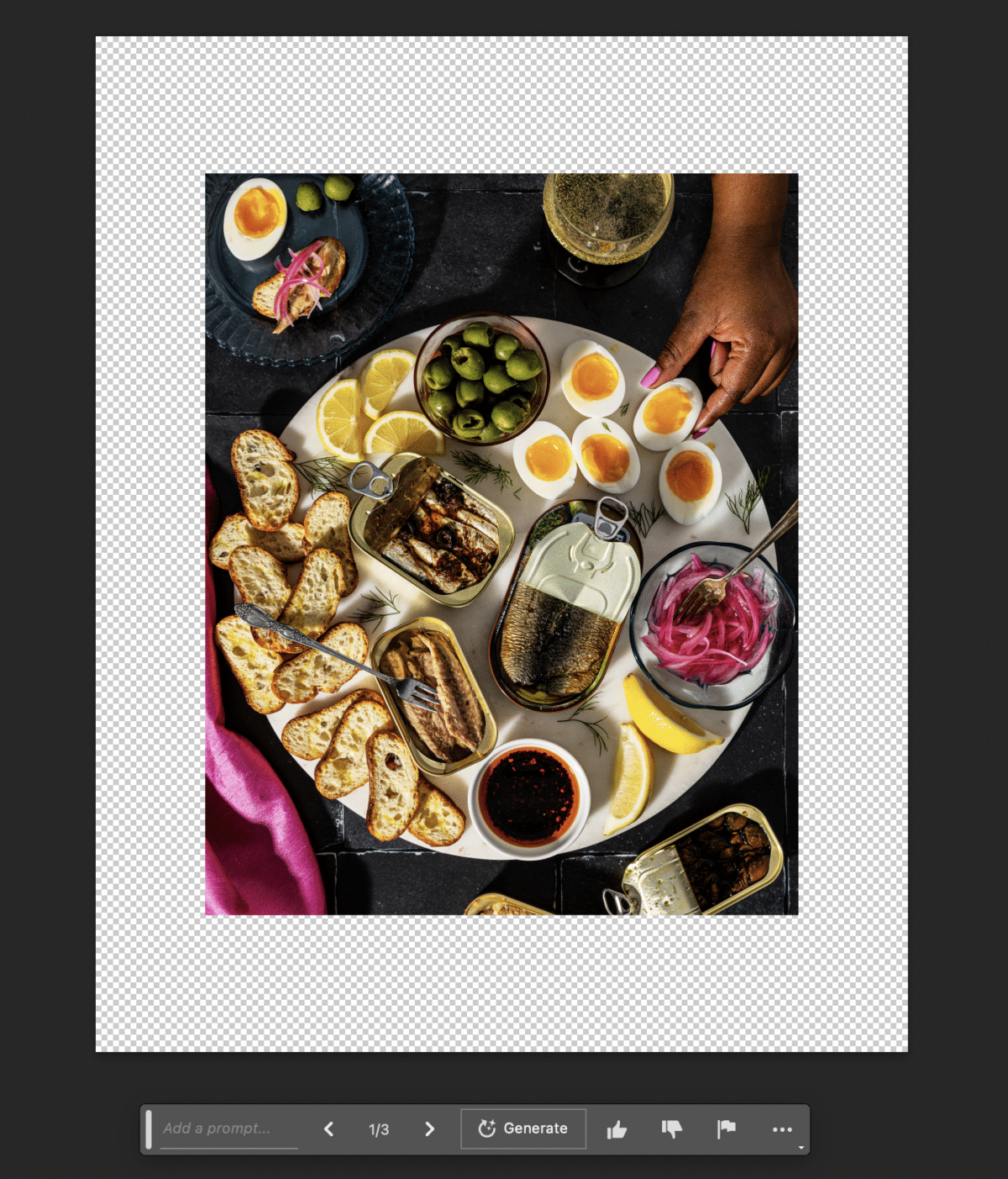
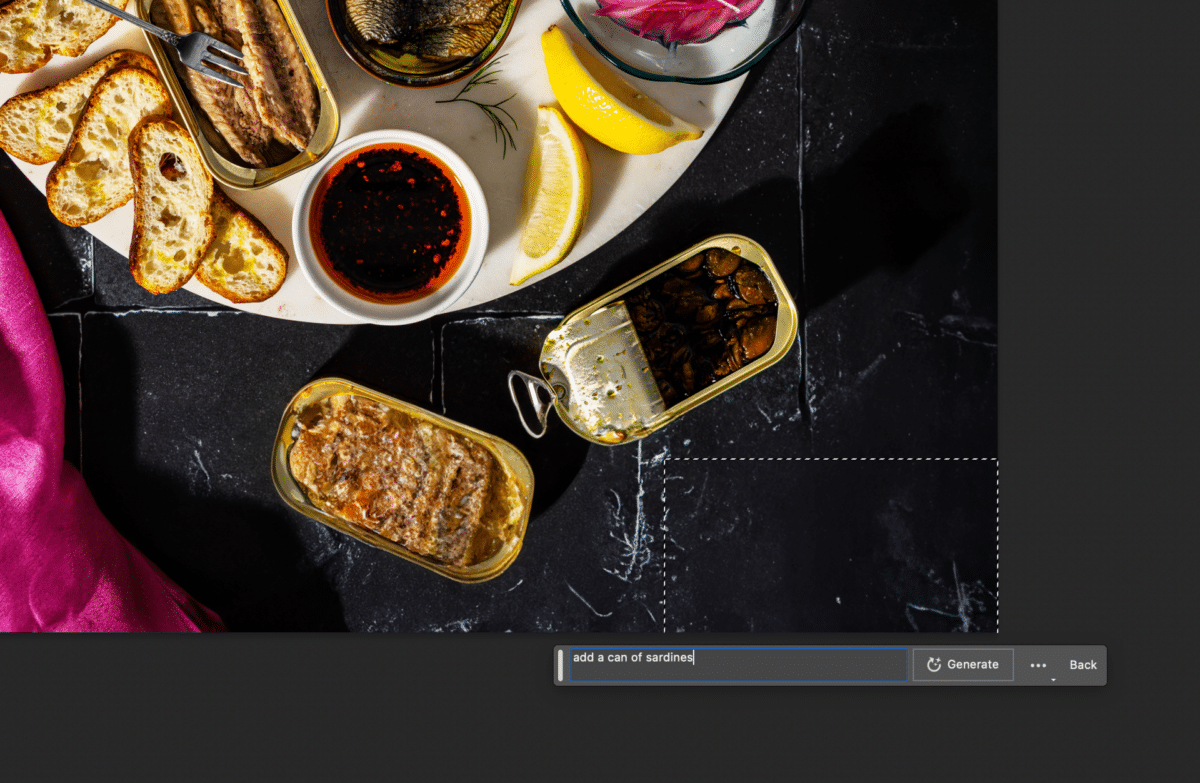
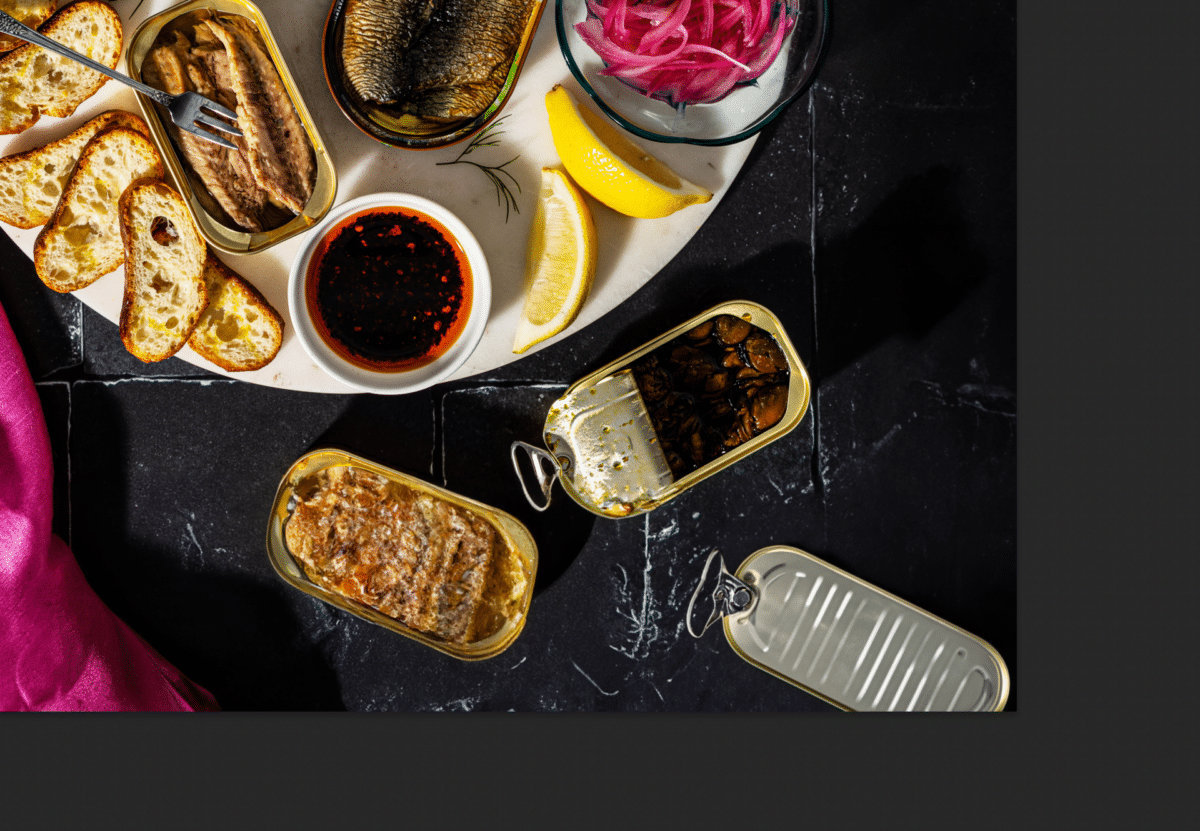
These tools have also been showing some promise for our team of Art Directors here at Dish. For instance, Bing app’s AI image generator has helped them save precious time searching for inspiration images that help provide visual references to our clients.
Trying to find just the right image can be hugely time consuming for our Art Directors, sometimes taking longer than any part of the planning and outlining process. Combing through the internet or Pinterest for photos that have the right subject matter, lighting, backdrops is sometimes nearly impossible.
AI image generators have changed all of that. By trying various prompts, the Art Directors can often successfully create images that are exactly what they’re looking for.
However, there are some limitations to this tech, as well. Sometimes, specific prompts with more detailed instructions can result in a chaotic, confusing image. The image generator seems to work best when the prompts are extremely clear and simple, like chocolate cupcakes against a white background. Also, the rendering of the images, especially if they include human faces or hands, can be a bit wonky.
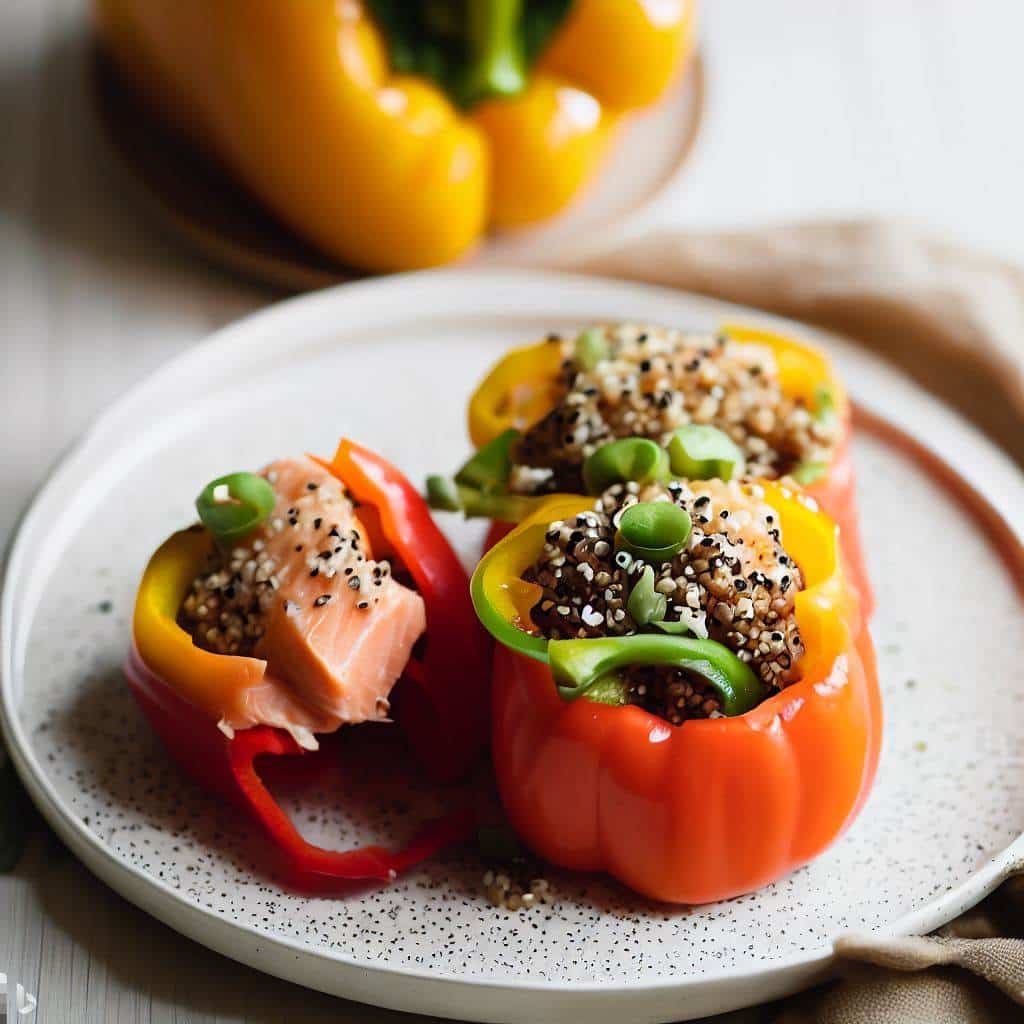
Our Art Directors have also noticed that the AI image generator works very well for recipe-based concepts, like the cupcakes example above, but it starts to fail when we want to generate images from original ideas.
As AI continues to evolve, Dish Works will keep figuring out ways to use it to expand and enhance our creative, collaborative energy to make beautiful, compelling content for our clients!
Ready to work with our amazing, tech-savvy team at Dish Works? Head here to get the conversation started.